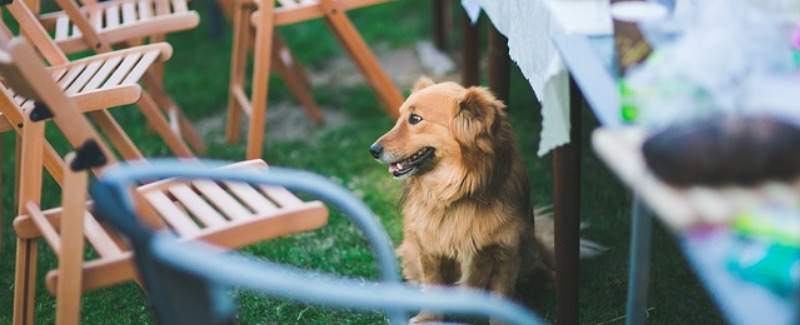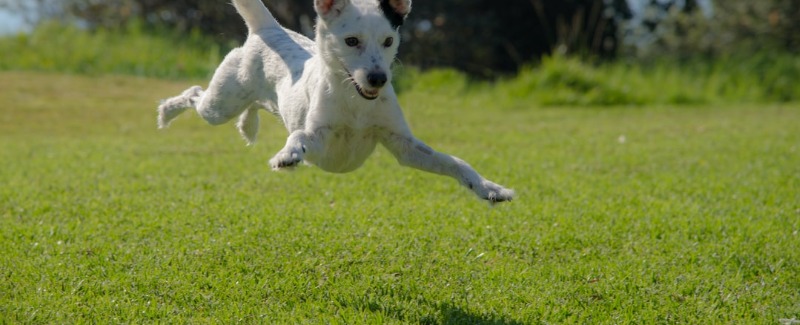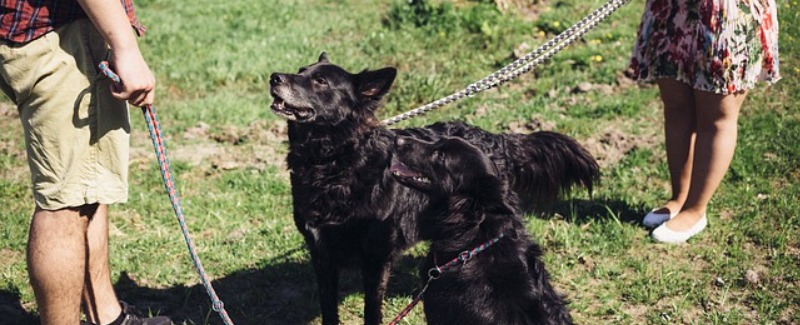Teaching your dog to settle during meal times has lots of positive side effects. It keeps your dog from begging at the table, or scavenging underneath it for dropped morsels — or away from your kids, who might sneak vegetables from their plates and into your dog. It has an added relationship benefit, as leaders eat first, then allow the lower-ranking members to eat.
This is the main difference between the dinnertime settle and other settle exercises. In the other exercises, you occasionally reward your dog during the exercise. For this exercise, only reward your dog when you are done eating. If you practice every time you sit down to eat a meal, your dog will probably automatically assume the correct position within a few weeks as soon as you take your seat. Some dogs will lie down whenever you eat.
Small Sacrifices
The sacrifices in this case are indeed small. At each meal during the training process, someone will have to commit to making sure your dog maintains the settle. At first, your dog will be right next to you, just like you’ve been doing in your training so far, so making corrections is relatively easy. As you move the mealtime settle spot to its permanent location, you may have to get up several times during the meal to make sure your dog is staying on the spot.
When you don’t give up, your dog eventually will acquire the habit of quietly accepting the restraint of settle, even in situations where he’d much rather follow his instincts, like getting as close as possible to the food on the table. So, meals may not be eaten in peace (or hot) for a couple of weeks, but it’s a small sacrifice in the grand scheme of things.
Many people like to share food from their plates with their dogs. That’s perfectly fine, as long the food is not harmful to dogs (some examples of foods to avoid are onions; chocolate; or anything too greasy, spicy, or salty). From a relationship standpoint, and to prevent annoying begging, don’t share your food while you’re eating it. Your dog and your relationship will benefit from waiting until you’re finished eating to share.
Getting Distance
By the time you get to working on distance in the settle, your dog should have a solid grasp of the concept that when you give your settle command, his only option is to stay on the mat and lie down until you release him. Spend several days having your dog settle on his mat right next to you while you eat. If he can hold it for the entire duration of the meal with no help (no corrections, no feet on the leash), you’re ready to start adding distance.
When you decide on the location of the permanent settle spot, do several short settles there before you do your first test run at a meal. Send your dog to his mat, then sit at the table for a few minutes before rewarding and releasing your dog. At mealtimes, send your dog to lie on his mat before you sit down.
As long as he doesn’t leave the mat, ignore him if he changes position. Praise him quietly occasionally as long as he’s lying down: “Good settle.” If he moves off the mat, don’t say a word; just take him by his leash and bring him back to his mat and make him lie down again, either by stepping on the leash, or giving him collar pressure straight down, combined with the magic-button technique you learned when teaching your dog to do a down. If you have to correct him more often than three times during a meal, consider using a tether to keep him in place.



